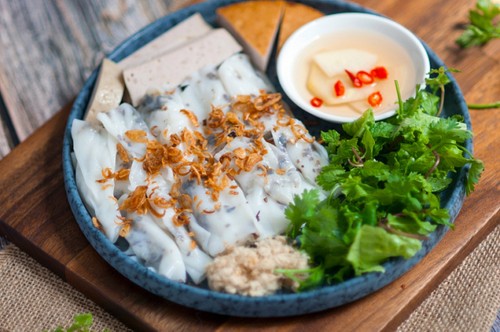
Bánh cuốn is made from rice flour, thinly coated on a cloth and then steamed in a large pot of water for a few minutes. When the wrap is finally cooked, it will be rolled with fillings, such as pork, shrimp, wood-ear mushrooms, shiitake mushrooms, and chopped green onions.
“This steamed rice wrap often accompanied by a medley of trimmings: a few slices of Vietnamese pork bologna, roasted cinnamon pork, fermented cucumber and bean sprouts, and, of course, a ramekin of mild fish sauce,” says Michelin.